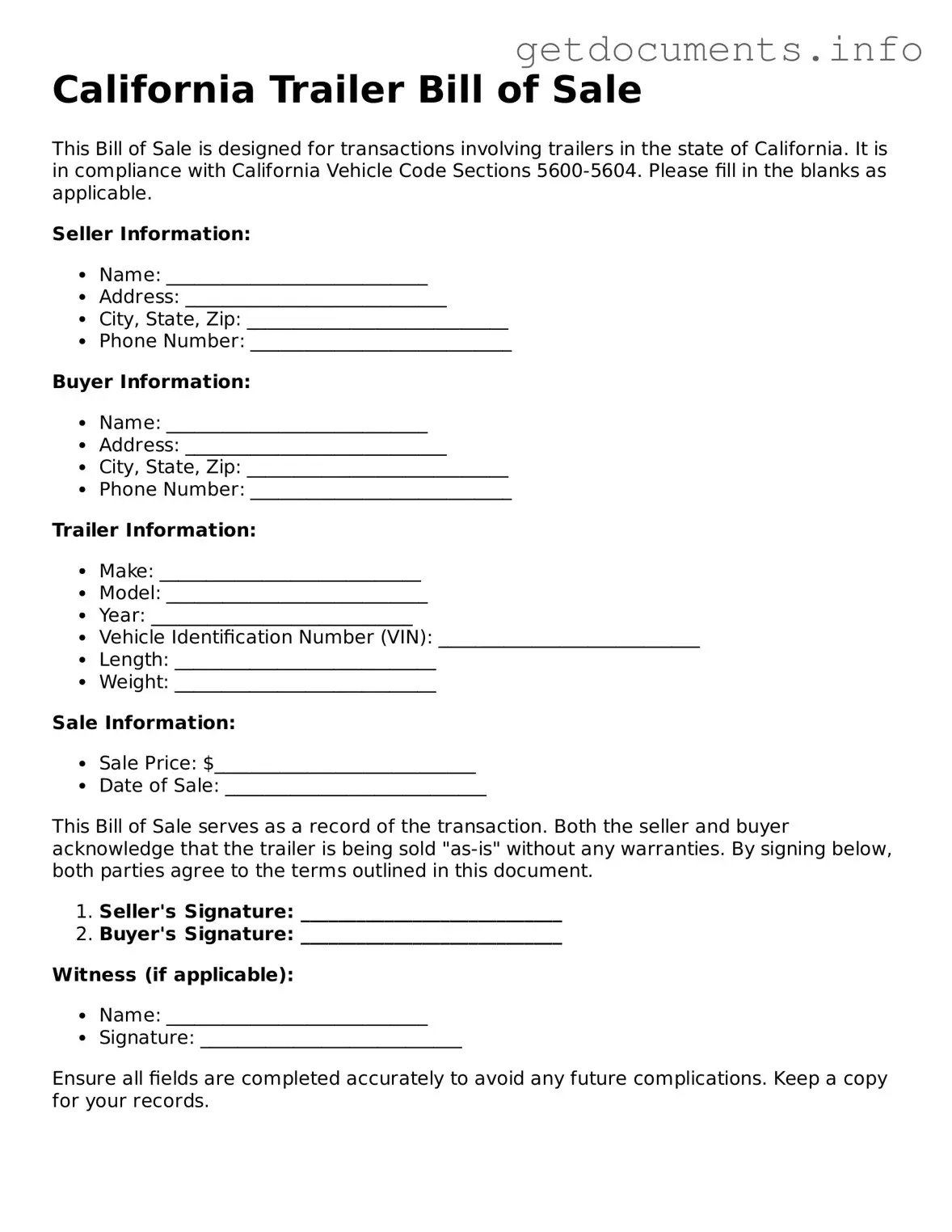Free Trailer Bill of Sale Template for California
The California Trailer Bill of Sale form is a crucial document used to record the sale of a trailer in the state of California. This form protects both the buyer and seller by providing a clear record of the transaction, including important details like the trailer's identification and sale price. Understanding how to properly fill out this form ensures a smooth transfer of ownership and compliance with state regulations.
Ready to complete your Trailer Bill of Sale? Click the button below to get started!
Access Trailer Bill of Sale Editor
